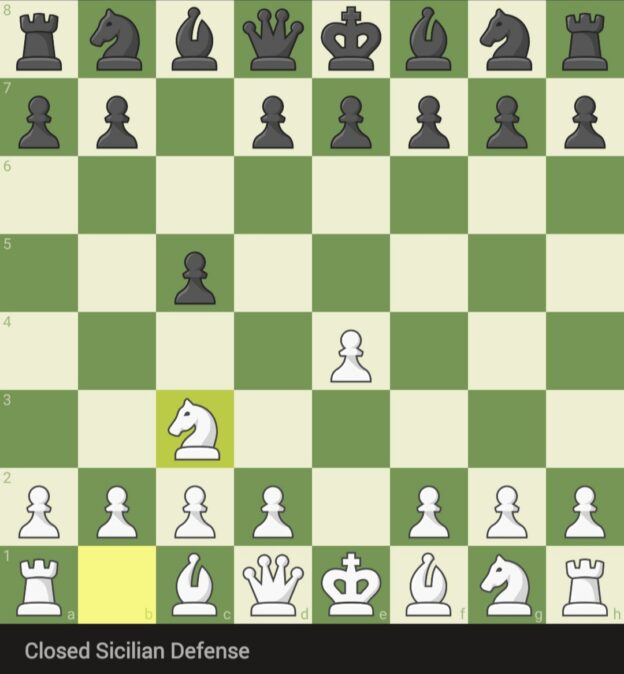Within the realm of chess openings, the Sicilian Defense reigns as a fortress of tactical complexity and strategic richness. Among its many variations, the Closed Sicilian stands out as a profound embodiment of patient and strategic chess play. In this essay, we will explore the history, principles, and enduring allure of the Closed Sicilian, an opening that has tested the mettle of chess masters and enthusiasts alike.
Historical Origins:
The Sicilian Defense, known for its asymmetrical nature, has a history that stretches back centuries. However, the Closed Sicilian, distinguished by White’s choice to refrain from an early d4 push, gained prominence in the mid-20th century. It was often favoured by players seeking to avoid the complexities of open Sicilian variations.
Key Moves and Variations:
The Closed Sicilian typically unfolds with the moves 1.e4 c5 2.Nc3, with the knight occupying the d2 square rather than advancing the d4 pawn immediately. Black responds with 2…e6, fortifying the d5 square and preparing for a solid pawn structure. From this point, a variety of plans and setups are possible, including the Hedgehog, Scheveningen, and Accelerated Dragon.
Principles and Characteristics:
- Solid Pawn Structure: The hallmark of the Closed Sicilian is its solid pawn structure, with pawns on d2 and e4 for White and d6 and e6 for Black. This structure often leads to strategic battles revolving around central control and pawn breaks.
- Patient Development: Both sides in the Closed Sicilian tend to develop their pieces patiently, focusing on piece harmony and central control. The absence of early pawn breaks leads to a more manoeuvring-oriented phase of the game.
- Strategic Complexity: While it may seem tranquil compared to open Sicilian variations, the Closed Sicilian is a wellspring of strategic complexity. Players must navigate the intricacies of piece placement, central control, and the timing of pawn breaks.
Notable Games and Players:
The Closed Sicilian has been employed by numerous chess luminaries. Grandmasters like Anatoly Karpov and Vladimir Kramnik have displayed their mastery in Closed Sicilian positions, often showcasing the depth of understanding required to excel in this opening.
Modern Status:
In contemporary chess, the Closed Sicilian retains its status as a respected and versatile choice. Players at all levels appreciate the balanced and strategic nature of this opening, making it a valuable addition to a player’s repertoire.
Conclusion:
The Closed Sicilian is a testament to the enduring appeal of strategic chess play. In a game often defined by sharp tactics and open battles, it offers a different path, one characterized by patient manoeuvring, solid pawn structures, and long-term strategic planning. It’s a reminder that in chess, as in life, balance and patience can lead to triumph. Whether seen in classical games or modern encounters, the Closed Sicilian continues to challenge and inspire chess enthusiasts, ensuring its place as a strategic gem in the world of chess openings.
